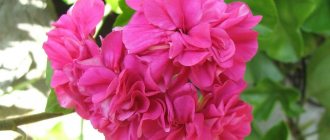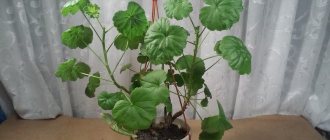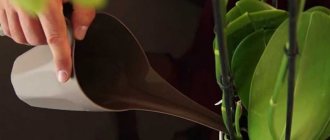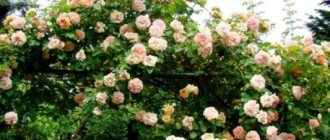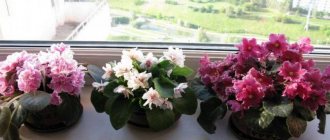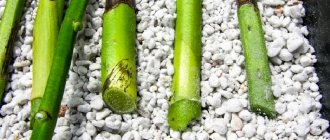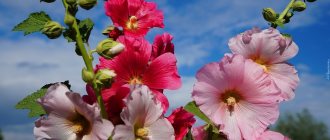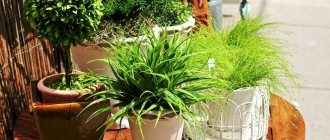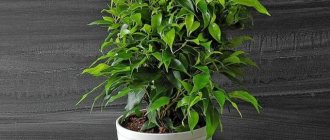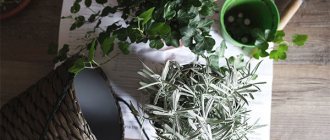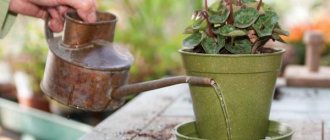Petunia is called the queen of the flowering garden. From early spring to late autumn, spreading colorful bushes decorate gardens, balconies and terraces. To ensure that the seedlings are lush and live as long as possible, the plant is irrigated abundantly and fertilized on time. By regularly shortening the growing point, a long-flowering rounded bush is obtained from a small shoot. The procedure seems simple, but novice gardeners often make mistakes. If you know when and how to pinch petunia correctly, the crop will turn your garden into an original blooming corner.
Features of the procedure
Pinching (pinching) the central stem is a mandatory operation, which is carried out for abundant flowering and the formation of a strong root system of seedlings. Pruning stimulates the formation of side shoots with flower buds. The bush begins to grow in width. 2 weeks after pinching, the first buds appear. Tweezing is performed with a previously disinfected instrument (sharp stationery knife, pruning shears or nail scissors). You can break off the tip of the branch with your fingers if your hands are washed clean.
Reference! It is necessary to remove fading petals along with the receptacles in time, otherwise a seed pod will begin to form where the pollinated flower was. This will take away the strength of the seedling, slow down stem formation, and reduce the quality of flowering.
Why is the growth point removed?
Pinching is shortening the tip of the stem. After manipulation, the nutrients are concentrated in a smaller volume of foliage and greenery, therefore the state of the plantings changes:
- branches thicken;
- axillary shoots appear;
- the elasticity and brightness of sheet plates increases;
- dormant buds are activated.
Sometimes pinching is done to save plantings from premature withering and depletion. The shoots planted in a cramped container lack water, nutrition and light. In search of resources, they begin to compete with each other and stretch out. Seedlings grown in a hot room have foliage withering and vines thinning. Trimming the ends will make the seedlings fluffier and stronger.
Additional Information! If the shoots are not shortened in time, the petunia will grow 1 to 4 long stems. Several flowers will appear on each, under the weight of which they will fall. The seedling will quickly lose its decorative effect. Pinching will give a strong bush with a powerful root system.
When to trim the stems
In order for the crop to bloom for a long time, choose the right time for pruning:
- The first time a petunia with five formed leaves is pinched is 1.5 months after seed germination or 1.5 weeks after seedlings are planted, when the height of the stems reaches 10 cm. At this time, the seedling begins to actively vegetate. 1.5 - 2 weeks after circumcision, it will regain strength and continue to grow rapidly.
- The second manipulation is carried out 27–29 days after the seedlings are planted in a permanent area, when their height increases to 15 cm. Shortening the regrown branches will cause the growth of new branches with flower buds. If repeated pinching is carried out earlier, planting will slow down development for a long time and delay the formation of ovaries.
- If they want to increase the number of buds, after 20 days they carry out another pinching. By this time, they already have time to transplant the petunia into open ground or flowerpots. Pinching is done 5 - 7 days after transplantation so that the plant has time to adapt. 6 leaves are left on grown branches.
The first two procedures are mandatory; the need for the third is judged by the condition of the seedlings. A break is taken between prunings so that the seedlings can recover and continue development.
Reference! If you sow the seeds early (in the southern regions - at the end of January - early February, in the middle zone - at the end of February), you can have time to do up to five pinchings.
Which varieties are tweezed?
Petunia obtained from “domestic” seeds is always pinched. Pinching and fertilizing make the plantings stronger and more beautiful. New varieties have been developed that do not require pruning. With careful care, hybrids form profusely flowering bushes without additional pruning. Plantings of any variety become more bushy after the operation. Typically, old varieties are pinched several times during the growing season. It is enough to prune new hybrids once to create a spectacular spherical plant.
Is it possible to pinch during flowering?
If you are late with the first pinching, the first ovaries may appear on the young seedling already at home. This will slow down the growth of the root system. To help the bush grow roots and become stronger, the ovaries or opened petals are pinched off.
Trim the flowering planting if the vines become thin and elongated. A maximum of 3 nodes are left on the overgrown central stem. Massive regrowth of flowers will resume after 15–20 days, and the decorative appearance of the bush will increase. Flowering plantings are pinched in 2–3 steps to restore the uniformity of shoot growth.
For what?
Pinching is an important procedure in the cultivation of indeterminate, non-standard and tall varieties. As they grow, a lot of vegetative mass and stepchildren are formed, so there is not enough nutrition and strength for ripening. To ensure that the bushes form correctly, excess shoots are removed by pinching the crown.
The purpose is to remove the growth point.
After implementation, the following positive effects are achieved:
- increase in harvest volume;
- improving quality and marketability;
- reduction of ripening period;
- prolongation of the fruiting period;
- improvement of metabolic processes;
- increasing the level of illumination.
Pinching technique
It is advisable for novice gardeners to learn how to properly pinch petunia so that it resembles a large ball covered with bright flowers. Pinching is performed step by step as follows:
- Disinfect the instrument and wash your hands thoroughly.
- Select sections of lashes to be shortened. Imagine how the pruned bush will grow.
- The growth point is cut off at an acute angle, trying not to leave burrs. 4–5 internodes are left on the main stem, 3/5 of the stem is left on the lateral ones.
- The cut tops are placed in Kornevin’s solution or immersed in a soil mixture for rooting.
- The cut areas are dusted with crushed coal.
After the manipulations, the mother liquor is watered with lukewarm water and fed.
How to propagate a crop with cut off tops
Broken stem fragments with 3–4 leaves are good planting material. Under normal home conditions, cuttings are rooted using the following methods:
- The cut off crown is placed in a glass or small jar, and a solution of Kornevin or Heteroauxin is poured. A phytohormonal preparation accelerates the appearance of roots. The seedling is removed to a warm place. The liquid is renewed every 2 - 3 days. When roots 0.5–0.7 cm long are formed, the cuttings are planted in the soil.
- The tip of the cut shoot is dusted with Kornevin powder and immersed in a moistened soil mixture. Cover with a film on which 3–5 holes are made for air intake; put in a warm room. The shelter is periodically removed to water and ventilate the seedling.
- Leaves are broken off from the cut top, leaving the top pair. The cuttings are immersed in damp vermiculite almost to the remaining leaves. Place a perforated plastic bag over the container with the seedling and transfer it to a warm place.
After about 2 weeks, a full-fledged shoot is obtained, the signs of which will coincide with the signs of a two-month-old seedling. You can determine that a cutting has taken root by an increase in its height, the appearance of buds, and the elasticity of the greenery. Bushes obtained from the tops retain the properties of the mother plants, although they bloom 1.5 - 2 weeks later than them.
Additional Information! After planting in the ground or flower pots, grown petunia, so that it bushes beautifully and blooms for a long time, is fed with humic fertilizers. Concentrated solutions combine the properties of biological products, organic and mineral substances. The preparations saturate the soil with nutritional components. Improves survival rate and accelerates stem formation.
Alternative methods for obtaining lush bushes
If a summer resident grows flowers “for himself,” taking care of beautiful plantings does not cause much trouble. If petunia seedlings are grown for sale, caring for hundreds of seedlings can be cumbersome. To simplify the work, gardeners treat petunia with growth regulators for lush flowering:
- Epin;
- Zircon;
- Krezacin;
- Narcissist;
- Silk.
These drugs stimulate the development of plantings and control physiological processes: they cause the formation of lateral processes and reduce the risk of stretching.
How to care for seedlings after pinching
Shortening the stems injures the tissues and delays flowering by 2.5 weeks. In order for the seedlings to regain their strength, follow the rules of care:
- Immediately after pinching, the plants are watered. When caring, follow the watering regime. Do not allow fluid to stagnate in the root area. On hot days, plantings are irrigated twice - early in the morning and in the afternoon.
- They are fed with mineral fertilizer, which is dissolved strictly according to the instructions and applied to moist soil. The crop can be fed with Osmokot or Zion, which have a prolonged effect. These substances are added to the soil once during planting, but they act intensively throughout the growing season of the seedlings.
- The leaves are sprayed with a stimulant solution (Cytodef, Bud, Zircon).
- Seed pods and dried buds are removed in a timely manner.
Supportive operations help seedlings cope with stress faster.
Reference! In order for the crop to quickly restore immunity, bush beautifully, and bloom for a long time, it is fertilized with succinic acid. The natural biostimulant acts gently but effectively. In an acidified environment, the culture develops well, absorbs nutrients better, and blooms brightly.
Differences in pinching tomatoes in a greenhouse and in open ground
The pinching procedure is carried out according to the same rules both for tomatoes in open ground and in greenhouse beds.
There are differences, but they only relate to timing.
Nuances taking into account the landing site:
- In uncovered open beds, the tops of the bushes are pinched 30-34 days before the tomatoes are fully ripened. This time falls on the last ten days of July and the first days of August.
- For greenhouse varieties, the interval is longer, the timing corresponds to the characteristics of the varietal lines. The manipulation is carried out in a greenhouse, taking into account the climate; sometimes the tops are cut off between September and November.
Features of pinching different types of petunia
The type of petunia affects the formation of the bush and the number of pinchings.
Bush
The most unpretentious look. The seedlings resemble small trees covered with flowers of the same size and color. The height of compact bushes is no more than 45 cm. The lashes of bush varieties look to the sides or upwards. Pinch off the top of the central stem. After the operation, the seedling grows side branches. If the bush is healthy and looks neat, it is enough to carry out 2 - 3 procedures.
Ampelous petunia
Unlike bush petunias, flowers of this species do not have a main stem. Thin shoots directed downwards grow up to 1.2 - 1.3 m. After pinching, side shoots grow. To prevent the center of the hanging seedling from appearing empty or falling inward, the vines growing in the middle are shortened when they reach 10 cm. After 3 to 5 pinchings, bushes with flowing shoots become especially graceful.
Additional Information! Landscape designers plant ampelous petunia in tall floor vases, hanging flower pots, and multi-tiered flower beds. After pinching, spherical plants with flowers of different sizes and shades look very elegant.
Cascade petunia
The flower first grows upward. The length of thick elastic stems sometimes reaches 1.65 - 1.85 m under the weight of greenery and buds, so they fall and begin to grow downwards. Pinching stimulates the rapid growth of lashes in width. To make cascading petunia lush, the plant is pinched 4 to 6 times. The first time they simply cut the stem. With repeated procedures, they show imagination and creative abilities. This helps to form spectacular bushes. After pruning, the branching stems will descend from the flower pots in an elegant train.
What annuals can be pinched to make them bush? How and when to do this correctly?
Svetlana, you asked a very interesting question about the “green surgery” of annuals, including pinching or pinching, removing faded flowers (inflorescences), pruning flowering shoots, pruning, and cuttings. Pinching or pinching is the removal of the upper part of a young shoot from a plant; It is used to cause, instead of apical growth, increased development of lateral shoots of the plant to increase flowering and fruiting. In addition, pinching is carried out in order to form a beautiful plant shape. In some flower crops, pinching is used at the seedling stage. It is better to carry it out before planting in open ground. Planted seedlings are pinched only after they have taken root and begun to grow. This technique helps to obtain branched and low compact plant specimens, which, for example, is very important for ageratum, heliotrope, salvia, irezine, achyranthes, godetia, Dutch carnation and tall varieties of snapdragon. So, pelargonium seedlings (Pelargonium) are pinched at a height of 8-10 cm; in Tithonia rotundifolia, seedlings are pinched above the 3-4 leaf. Seedlings of garden petunia (Petunia x hybrida) are also pinched above the 3rd pair of true leaves. This is done so that the side shoots that produce flowers grow. In the absence of this surgery, the plant will develop into 1-3 lodging, misshapen shoots. Before planting in open ground, pricked seedlings of Coleus blumei are pinched when they reach a height of 8-10 cm. Vigorous varieties of coleus are then regularly pinched or pruned to maintain the compactness of the plant. Tall varieties of impatiens (Impatiens) also need pinching. However, recently varieties specially created by breeders have appeared on sale, and most of all F1 hybrids, which have low, powerful, well-branched, early and amicable flowering plants, which, as a rule, do not need pinching. Seedlings of annual vines are also pinched over 3-4 leaves: fire bean (Phaseolus coccineus), common dolichos (Dolichos lablab), Barclay's ashberry (Asarina barclayana), winged thunbergia (Thunbergia alata), foreign nasturtium (Tropaeolum peregrinum), various species and varieties of morning glory (Ipomoea), etc. Pinching is also used in the case of elongated seedlings: removing most of the stem stimulates the development of axillary shoots and promotes the correct formation of the plant. To obtain bushier plants, pinch the tops of growing shoots not only of seedlings, but also of adult plants. For example, to enhance branching and improve the quality of inflorescences in Helichrysum bracteatum, plants with 6-8 leaves are pinched. Be sure to pinch young plants of Cleome spinosa and Cosmos. Regularly pinch out the growing points of strong shoots of hanging plants grown in containers to ensure uniform growth. In case of strong thickening, some of the shoots, primarily weak and rotten ones, are removed. In ampelous varieties of verbena (Verbena), it is useful to pinch the top of the main shoot above the 5th leaf so that the plant bushes and blooms better. Remembering that each pinching is stress for the plant, which delays flowering, it should be used no more than 2 times during the growing season. Pinching is the removal, plucking, breaking out of axillary lateral young shoots or buds; carried out as they appear in order to enhance the development of the main inflorescences, buds or for growing plants in standard form. The closer the shoots are to the plant’s growth point, the earlier and more carefully they are removed so as not to cause bending and deformation of the central stem. This is how standard trees of tree heliotrope (Heliotropium arborescens) are formed: from a powerful specimen with a well-developed central shoot, the emerging primordia of inflorescences and lower lateral shoots are removed (stepchildren). When the desired height is reached, the top of the plant is pinched. The density and correct shape of the crown is achieved by frequently pinching side shoots and creating optimal conditions for growth. The beauty of some summers is like a flash of lightning: it is so short, for others it is longer; Often a certain period of time is allotted to it. Many annuals bloom abundantly and for a long time before frost: verbenas, petunias, heliotrope, zinnias, nasturtiums, etc. From June to September, their flowers tirelessly bloom: Houston's ageratum, large antirrhinum, rejected marigolds, brachycoma iberisolifolia, blue cornflower, dimorphotheca, coreopsis tinctalis, three-month lavatera, etc. The tireless purple-flowered green sage (Salvia viridis) blooms without respite from June to September; w. brilliant (S. splendens) - from May to September; Gatsania flowering continues until the first frost. A stellar scattering of bright red flowers blazes throughout the summer and into late autumn. You can prolong the flowering of annuals by regularly removing faded flowers (inflorescences) and pruning faded shoots. To replace the removed faded flowers (inflorescences) of Chinese carnation (Dianthus chinensis), graceful agrostemma (Agrostemma gracilis), calendula (Calendula officinalis), etc., new ones are blooming. Be sure to remove faded inflorescences from low Drummond phlox plants (Phlox drummondii) growing on balconies and in containers. To ensure abundant flowering of winged tobacco (Nicotiana alata var. grandiflora), fading flowers must be removed along with the seed pods. In Tithonia rotundifolia, faded inflorescences are removed, and in order for the plant to bloom more luxuriantly, it is thinned out: when the shoots reach 30 cm, thin and weak stems are cut out at the very base, leaving only strong ones. Withered cosmos inflorescences are immediately removed, which promotes the formation of new buds. Remove faded flowers and inflorescences of hanging plants. So, after the end of flowering, the Carpathian bell (Campanula carpatica) is cut off, fed, and after 2-3 weeks flowers appear on it again. Some summer shoots are pruned with faded shoots. So, plants of asperula or woodruff (Asperula) are pruned at a height of 10-15 cm. You can prolong the flowering of Diascia if you cut off the faded stems at a height of 5-7 cm. Then the plants need to be watered abundantly and fed with complex fertilizer. The stems will grow quickly and amicably, flowering will last until the end of September. If fading coreopsis (Coreopsis tinctoria) plants are regularly pruned at a height of 10-12 cm, re-blooming can be induced, which will last until late frost. If you cut sea lobularia (Lobularia maritima) at a height of 5-6 cm, water it abundantly and feed it, it will bloom a second time. In toadflax (Linaria), you can prolong flowering if you cut off the fading inflorescences at a height of 10-15 cm. After pruning, the plants need to be watered abundantly and fed with complete mineral fertilizer. Then it will bloom a second time and will bloom until late autumn. The most important point in caring for carpet plants to maintain the clarity of the pattern in flower beds, arabesques, and ridges is their regular cutting to maintain a certain height. In addition, sometimes there is a need for side cutting between separate groups of different plants. This work is carried out approximately once every 10 days to prevent excessive growth of plants beyond the flower bed onto the lawn, paths and from one group to another. Alternanthera bettzichiana, Hypoestes sanguinolenta, Iresine lindenii, etc. tolerate cutting well. Gardeners have long appreciated the ability of Kochia scoparia var. trichophylla to acquire the desired shape during cutting. Even without special skills, thanks to a kochia haircut, you can get a simple-shaped figure or an even border. It tolerates haircuts and cosmos well. When cutting plants, you should remember that at the beginning of growth and after cutting, plants need fertilizing with nitrogen fertilizers. A kind of “surgery” is also the green cuttings of annual plants - one of the methods of vegetative propagation of plants used to obtain planting material of a certain variety. In mid-summer, cuttings are taken from the side shoots at the base of the stem of the hybrid Gazania (Gazania x hybrida). For better rooting, they are treated with growth stimulants: heteroauxin, root. Verbena can be propagated from cuttings. To do this, shoots 5-6 cm long are taken from a well-developed plant and planted for rooting in peat and sand. Waller's balsam (Impatiens walleriana), heliotrope, cloves, pelargonium, and petunia are propagated by cuttings.
Pinching petunia growing in flowerpots and pots
Petunia is often grown in hanging flowerpots and wicker baskets. Bright multi-colored seedlings decorate the recreation area at the dacha, balconies, terraces, and home windowsills. Several bushes are planted in one container to create an original composition. 2 - 3 plants that have survived the first pinching are transplanted into pots. To emphasize the style and elegance of the plantings, the side stems are pinched.
The lashes of cascading and ampelous petunias grow more than 100 cm. If growth is not stopped in time, the bare lower parts of the shoots will rise above the walls of the container, and the plantings will look sloppy. Pinching will prevent this problem. When shortening the lashes, pay attention to the height of the container: the length of the cut stems should not exceed the height of the container.
Additional Information! Do not thicken the plantings. No more than three seedlings are planted in a pot with a diameter of 30–35 cm. After pinching, they will begin to vigorously bush and completely occupy the area. Thickening will cause stretching, the development of diseases, and the spread of insects. Lack of ventilation inside the container is especially dangerous in cool, rainy weather.
Is it possible to pinch out the tops and seedlings?
Experienced farmers advise beginners to pinch tall tomatoes. Why is this necessary? This will reduce the number of small or unripe fruits.
The goal is to slow down the upward growth of shoots and leaves, and direct all nutrition, organic matter and minerals, to the tomatoes. The fruits will be able to absorb all the strength as much as possible and have time to grow and ripen.
Positive effects of pinching seedlings:
- formation of dense bushes;
- root stimulation;
- strengthening the main trunk and brushes.
Possible mistakes of novice gardeners
Trying to turn a bush into a lush ball, novice gardeners make common mistakes.
- Pinch out a weakened or immature plant. Before pinching the shoots, the seedling is inspected. A frail flower conserves internal resources and will not direct efforts to the formation of new shoots. Manipulations can cause deterioration and death of plantings. For abundant and long-lasting flowering and beautiful branching, petunia is prepared in advance: the feeding regime is followed, it is well lit, and watered correctly. A bush that has been properly cared for will get stronger, tolerate the procedure well, and become lush.
- By working with blunt instruments, the grower can compress the vessels in the plant tissues. Trauma often causes the death of the seedling.
- A fragment that is too long is cut off. The length of the cut part should not exceed the height of the planting. You should remove no more than 1/3 of the stem.
- After the procedure, they are fed with nitrogen fertilizers. Nitrogen causes increased growth of green mass. To increase the number of buds and extend the flowering period, potassium-phosphorus preparations are added.
- You can't rush through the procedure. If the seedlings have less than five leaves, the operation will weaken the bush.
- If your petunia has outgrown, don't worry. The seedling is pinched above the fifth leaf. Even the first opened bud is removed: large flowers will appear in its place.
Reference! Before the procedure, scissors or a knife are washed with warm water and laundry soap, thoroughly rinsed with running water and disinfected with a solution of potassium permanganate, alcohol or hydrogen peroxide. An untreated tool can cause a plant infection. The sections are dusted with charcoal powder to prevent the occurrence of diseases.
Forming a petunia crown brings joy to the gardener. Pinching helps turn a nondescript seedling with thin shoots into a well-groomed flowering bush. To get spherical bushes densely covered with bright “gramophones”, you should not give up pinching. But you can’t often shorten the shoots: repeated pruning depletes the mother plant and reduces decorativeness. To learn how to prune petunia correctly, you can watch the video.
